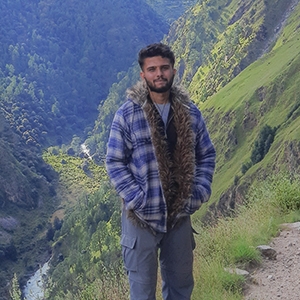History and Myths of Pashupatinath Temple
Pashupatinath was likely not built on a certain date and its origins are obscured by myth. With a long history that dates back to the fifth century AD, it is one of the greatest Hindu temples in the entire world. The earliest evidence of the temple's existence goes back to 400 A.D. The modern Pashupatinath complex main temple was constructed at the end of the 17th century to replace the one that had been destroyed by pests. Over the course of several centuries, countless smaller temples were built all around the main temple on both banks of the Bagmati River. It is regarded as a key pilgrimage site for Hindus worldwide and is mentioned in numerous ancient Hindu texts. The temple complex serves as a cultural attraction in addition to being a place of worship by hosting several festivals throughout the year.
Numerous myths and mythologies related to the origin of Pashupatinath are explained in many good books and scripts. It is believed that the inauguration of Pashupatinath was even before the Vedas were written. Among all the folktales connected to its origin, the famous one is that lord shiva and Parvati once disguised themselves in the form of deer on the bank of the Bagmati river. Later he refused to return to his standard form so deities had to use force on him during which one of his antlers detached from his head. The antler was the very first lingams native worshiped but it got buried in the land and disappeared. Subsequently, a herdsman found the antler when one of his cows showed him the location by flooding her milk in the lingam. Pashupatinath is a place where stunningly original, centuries-old Hindu rituals are performed, allowing visitors an opportunity to experience the distinctive spirit of Hindu traditions of life, death, and rebirth.
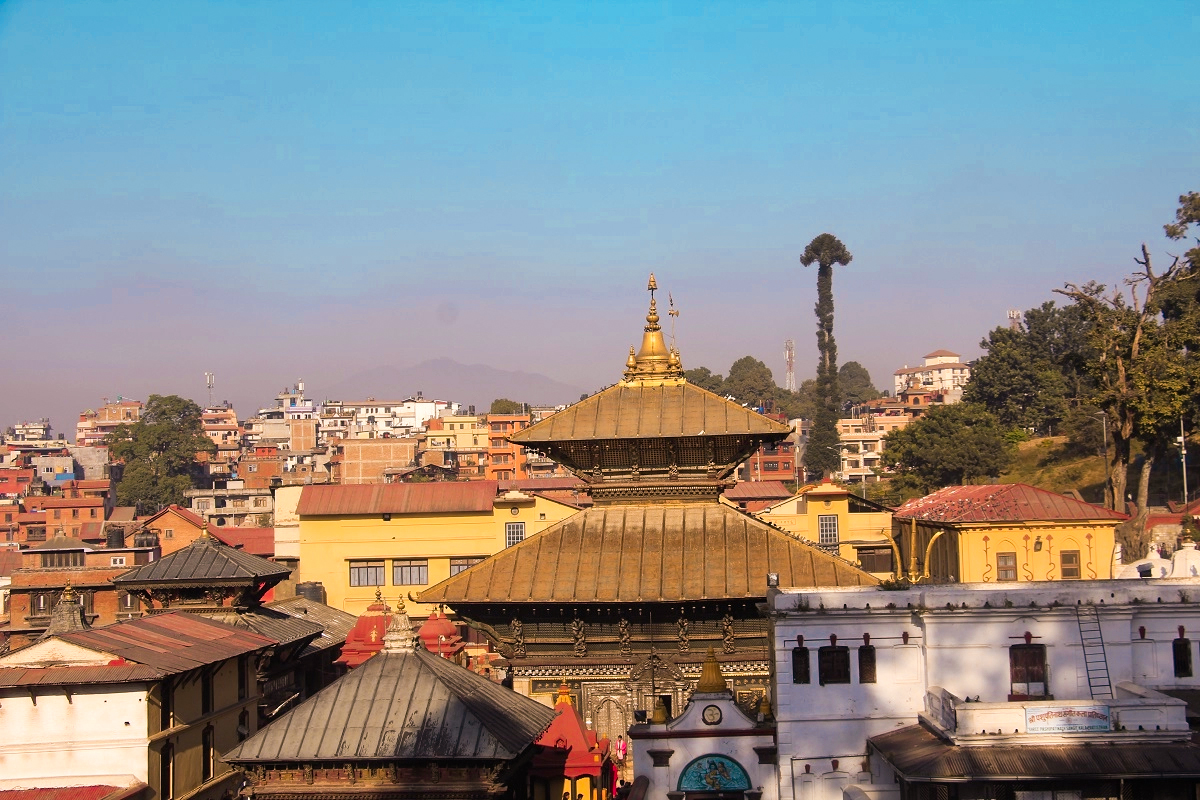
Festivals and Celebrations
As a prominent Hindu temple, Pashupatinath serves as the central place for several annual festivals and celebrations throughout the year. The following are a few of the main festivals that Pashupatinath celebrates:
- Mahashivratri: One of the most important holidays celebrated in Pashupatinath is Maha Shivaratri. It takes place in February or March and honors Lord Shiva. Thousands of followers congregate at the temple complex on this day to pray and ask for blessings.
- Teej: Women in Nepal celebrate a holiday called Teej that honors the goddess Parvati. On this day, women observe a fast and pray to the goddess for a long life for their husbands. During this event, a large number of female worshippers visit the temple site.
- Bala Chaturdashi: This festival honors Lord Shiva and is observed in November. On this day, worshippers pay prayers to Lord Shiva and take a holy bath in the Bagmati River, which flows next to the temple complex.
- Raksha Bandhan is another festival for the August holiday known as Janai Purnima. Hindu males pay prayers to Lord Vishnu and alter their sacred thread (Janai) on this day.
- Gai Jatra: It is a celebration honoring Lord Krishna that is held in August or September. The Newar people of Nepal celebrate this holiday in honor of cows. Cows are paraded through the city during the event, and people often dress up weirdly and put on shows.
In addition to these celebrations, the temple receives a large crowd of devotees throughout other significant Hindu festivals including Dashain,Tihar, and Holi.
Tourist Attractions near Pashupatinath Temple
Pashupatinath is one of the most famous tourist destinations in Nepal, attracting a substantial number of visitors each year. Following are some of the most popular tourist destinations near Pashupatinath:
- Pashupatinath's major attraction is the temple devoted to Lord Shiva, Pashupatinath Temple. The temple complex is one of the most significant Hindu pilgrimage sites in the world and a UNESCO World Heritage Site.
- Bagmati River: Hindus revere the Bagmati River, which flows alongside the temple complex. In addition to taking a swim in the river, visitors can also perform rituals and pray.
- Guhyeshwari Temple is an additional old temple found close to Pashupatinath. One of the Shakti Peethas (holy sanctuaries) in Nepal, is devoted to the goddess Parvati.
- Boudhanath Stupa is a huge Buddhist stupa located approximately 5 kilometers from Pashupatinath. It is one of the world's largest stupas and also a UNESCO World Heritage Site.
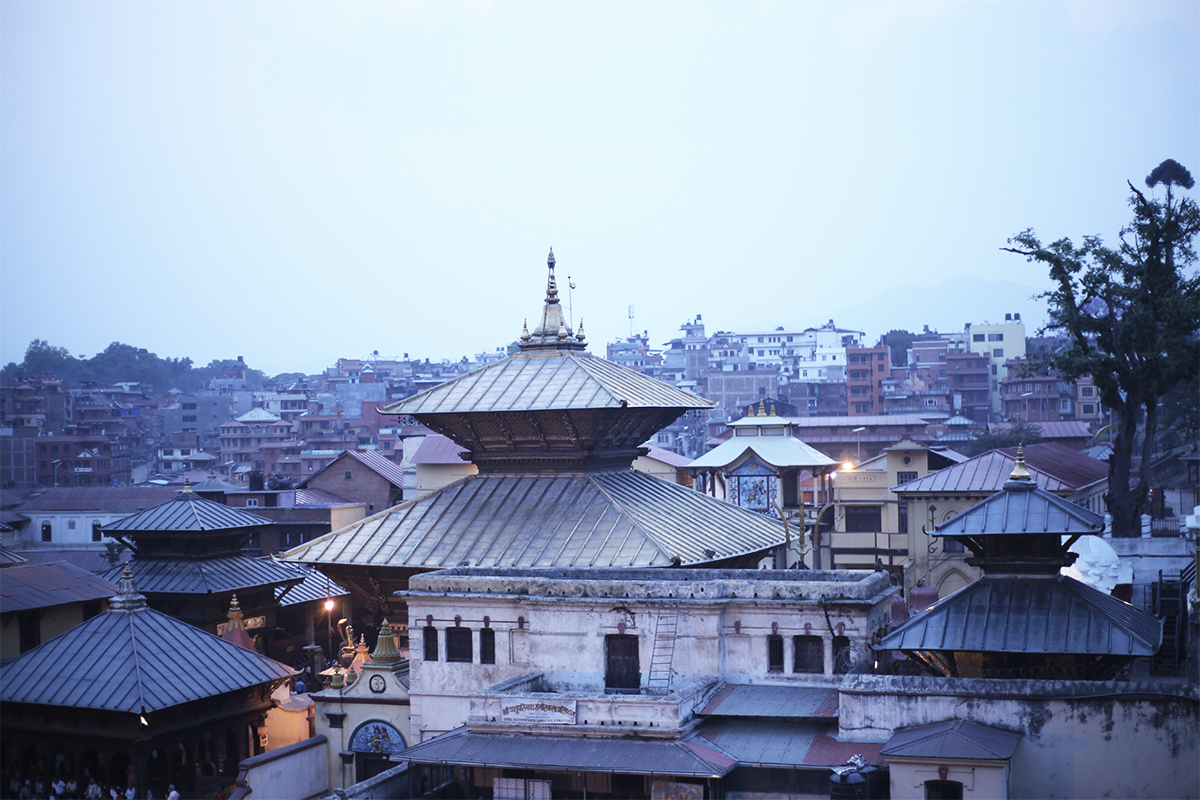
How to reach Pashupatinath Temple?
Situated on the outskirts of the Kathmandu valley, Pashupatinath is easily approached by private and public transport. Cabs in the Tribhuvan airport area will take you on a 10 min ride to reach the premises of the temple whereas from Thamel and Kathmandu Durbar Square it will take you 20 mins. Bike services like Pathao, Indriver, and Tootle are also easy modes of transport these days. Many public vehicles cruising around the valley are also available but overcrowded to reach the temple.
Importance of Pashupatinath temple
Pashupatinath is a highly worshiped Hindu temple which is located in the capital city, Kathmandu. It is widely regarded as one of the most important places of worship to visit on a pilgrimage anywhere in the world. According to Hindu mythology, Lord Shiva is credited with being the universe's creator as well as its destroyer and preserver. The temple is devoted to Lord Shiva. The complex of temples is spread out over a broad area and is made up of several smaller temples and shrines that are each devoted to a different god or goddess. Every year, the temple receives millions of worshipers from all parts of the world who come to pay their respect to Lord Shiva, pray to him, and plead for his blessings. In addition to this, it has been designated as a UNESCO World Heritage Site and serves as a representation of the diverse cultural history of Nepal.
How is Pashupatinath related to Mahabharata?
The Mahabharata includes a Pashupatinath-related story. Hindu mythology states that while in exile, the Pandavas visited the Himalayas and saw Maha Nandi, a Yaksha. Maha Nandi issued a challenge to the Pandavas, demanding that they answer his inquiries or else die. The oldest Pandava, Yudhishthira, accepted the challenge before Maha Nandi questioned him. The nature of the deity who resides in Pashupatinath was one of the questions. The correct response came from Yudhishthira, who said that Pashupatinath was the residence of Lord Shiva.
Yudhisthira’s correct response caused him to grant the Pandavas permission to proceed, and they went on their journey after that. This story is often cited as evidence of Yudhishthira's wisdom and insight, which allowed him to skillfully traverse difficult circumstances.
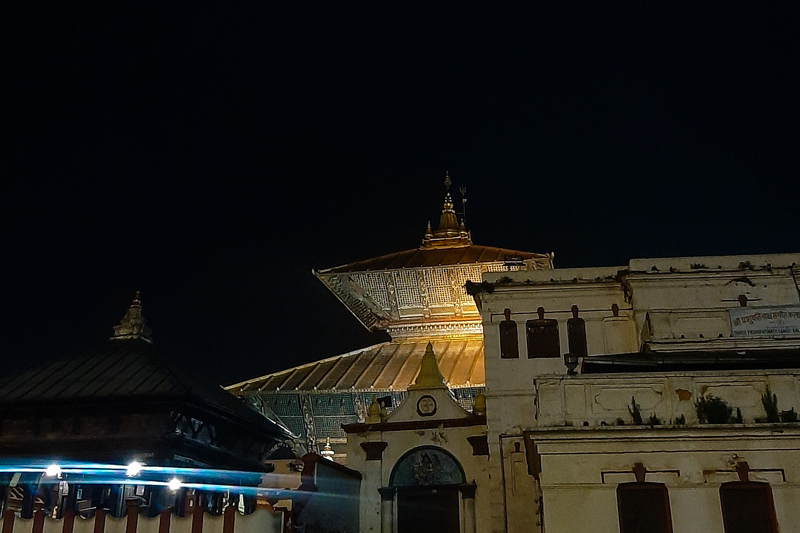
Why is Pashupatinath famous?
Pashupatinath is well-known for several things. First of all, Lord Shiva, one of the most significant deities in Hindu mythology, is honored at this temple, which is a widely renowned Hindu structure. A prominent pilgrimage destination for Hindus from throughout the world, the temple complex is stretched out over a huge area and is home to numerous minor temples and shrines devoted to various deities. Finally, the temple is situated near Nepal's capital city of Kathmandu, which draws millions of tourists each year. The temple complex is also a UNESCO World Heritage Site, which is awarded for its importance to architecture and culture. For worshippers and tourists alike, Pashupatinath is a special and significant cultural and religious monument because of all these characteristics.
Who can enter Pashupatinath temple?
One of the most important Hindu pilgrimage locations, the Pashupatinath temple attracts thousands of pilgrims annually. However, Non-Hindus are not allowed in the main temple compound or within the temple itself. This rule is strictly enforced, so visitors must prove they are Hindus before entering the temple grounds. The temple authorities have set up specific entry points for non-Hindus to observe the temple from the outside, and they are not allowed to cross a particular point. This is done to preserve the sanctity of the temple and stop non-Hindu visitors from unintentionally offending the religious sentiments of the worshippers.
Also, it is recommended for visitors to the temple act respectfully and dress modestly. Only a small area of the temple complex is available for photography, and visitors must take off their shoes to enter.
Best time to visit/explore Pashupatinath Temple?
Pasupatinath temple is a devotee’s go-to religious stop throughout the year in Nepal. The Pagoda-styled temple is embellished with garlands and luminous lamps around Hindu festivals like Mahashiva Ratri, Bala Chaturdashi, Hartalika Teej, and many more. On other usual days, visitors can experience the Pashupati temple Abhishekam from 9 am to 11 am all the four silver doors are open showcasing the Shivalinga inside the main temple. Mondays and Saturdays are mostly crowded due to some religious values. September to November is a favorable time of the year to visit Pashupatinath when there is less crowd and you can enjoy the serenity of the temple.
Only the people who practice Hinduism and Buddhism are allowed inside the main gate of Pashupati, whereas people from other religions can appreciate the aura of the surroundings from the outside where you can get a glimpse of the statue of Nandi (lord shiva's bull).
The architecture of Pashupatinath Temple
Constructed in pagoda style, the framework of the Pashupatinath temple including other temples was artfully sketched and built by some skilled craftsmen of Nepal back in the day. Over 492 shrines inside the Pashupati premises have some distinct and intricate handwork along with the carved wooden rafters, monuments, cubic sculptures, gold pinnacle on the roof, silver doors, and two Garbhagrihas making the area visually pleasing. The current complex of Pashupatinath temple was constructed in 1692 CE by Prachanda deva, a Licchavi king after the five-storey architecture built by Supushpa Deva in 800 AD. was destroyed by termites and earthquakes. Numerous funeral pyres are installed on the right bank of the Bagmati river.
Sandhya Arati at Pashupatinath Temple
A dedicated arati to the almighty is held on the eastern side of the bank of the Bagmati river every evening around 7 pm. Three priests are assigned to offer prayers to God together with the melody of devotional songs and hymns. A surprising view of hundreds of religious admirers floating away with otherworldly vibrations is evident during the arati. The open-air cremation is something that you will be able to encounter attending the mantras chanted by the priests.
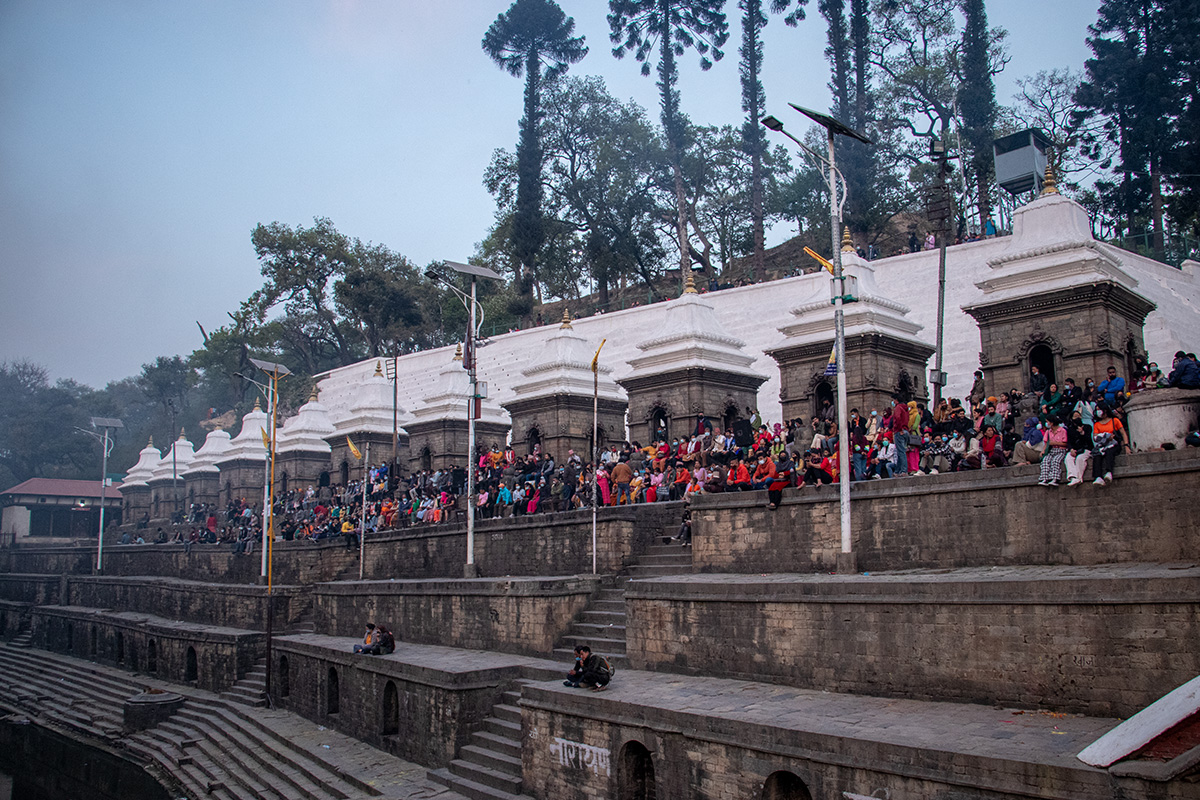 During your visit to Nepal, grab a chance to experience the heavenly sandhya arati and take yourself on a spiritual voyage. Pasupatinath temple is considered one of the most significant pilgrimage sites for Hindus but has become a major attraction for trekkers from all over the world as a part of the city tour. To bump into a surreal episode on your trip to Nepal, contact us for more details about the cultural and heritage sites of Nepal.
During your visit to Nepal, grab a chance to experience the heavenly sandhya arati and take yourself on a spiritual voyage. Pasupatinath temple is considered one of the most significant pilgrimage sites for Hindus but has become a major attraction for trekkers from all over the world as a part of the city tour. To bump into a surreal episode on your trip to Nepal, contact us for more details about the cultural and heritage sites of Nepal.





 During your visit to Nepal, grab a chance to experience the heavenly sandhya arati and take yourself on a spiritual voyage. Pasupatinath temple is considered one of the most significant pilgrimage sites for Hindus but has become a major attraction for trekkers from all over the world as a part of the city tour. To bump into a surreal episode on your trip to Nepal,
During your visit to Nepal, grab a chance to experience the heavenly sandhya arati and take yourself on a spiritual voyage. Pasupatinath temple is considered one of the most significant pilgrimage sites for Hindus but has become a major attraction for trekkers from all over the world as a part of the city tour. To bump into a surreal episode on your trip to Nepal, 